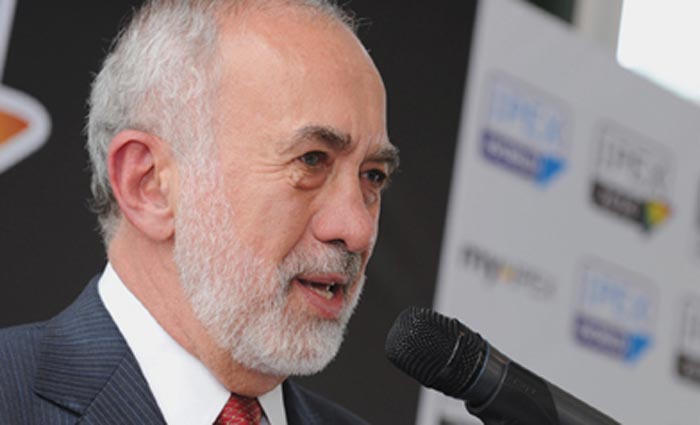
Landa founded Indigo in 1977 and sold the company to HP in 2001. He set up Landa Corporation in 2002 and the company has been developing a raft of technologies since, in utmost secrecy.
With Drupa just three and a half months away, a large article about the venture has appeared in Calcalist, the Israeli equivalent of The Economist.
Landa, who already has some 700 patents to his name, broke cover on the new venture by filing a slew of fresh patents relating to the nano printing technology.
The development, described as ‘digital nanographic printing’ appears to be a variant of inkjet technology that involves ink containing miniscule particles that are "smaller than a germ… and a printhead that can use the micro-droplets to print on virtually any material", according to the Israeli report.
At Ipex 2010 Landa told ProPrint's UK sister title, PrintWeek, that he was working on "nano technology in the field of energy". At the time, Landa said: "One of the reasons I sold Indigo to HP was so I could focus on this. I spent 16 years working in secret [before launching Indigo]. I’ve only been doing this secret for eight years."
The new print application seems to have evolved as a spin-off of the energy research. Its goal is to find a way of turning ambient heat into electricity.
Landa Corporation has four operating units, including a venture capital arm that has a stake in lenticular printing company HumanEyes and a philanthropic educational wing. The other two operations are Landa Labs and Landa Digital Printing. Landa Labs is staffed by employees at the cutting edge of science and engineering, including a theoretical physicist.
On its website, the firm states that the digital printing division "develops next-generation digital printing technology which enables game changing performance. Targeted for mainstream commercial, packaging and publishing markets, Landa’s lineup of digital nanographic printing presses will be unveiled at Drupa 2012."
Landa has booked a sizeable 1,500sqm corner space in Hall 9, a hall that will house a variety of pre-media and digital print exhibitors including Screen, Mimaki and Miyakoshi.
Visitors to Drupa can expect Landa to bring his typical flair to the launch. The digital nanographic printing technology will be showcased in an amphitheatre-style setting with five presentations every day, bringing back memories of the theatrical presentations used to introduce the Indigo E-Print to the market in 1993.
Landa has retained strong ties with HP, acting as an adviser to the business for many years. While details remain sketchy, it would appear that his new technology could potentially compete with HP in some areas.
In a statement, Landa Corporation said: "Following the acquisition of Indigo by HP 10 years ago, Indigo founder Benny Landa established Landa (Corp), which has been developing next-generation digital printing technology. Called "Digital Nanographic Printing", this unique printing process, which employs Landa's proprietary nano-pigment inks (Landa NanoInks), imparts exceptional qualities to the digitally printed output and will enable game changing press performance. Landa Digital Nanographic Printing Presses target mainstream commercial, packaging and publishing markets. Landa’s lineup of digital printing presses will be unveiled at Drupa 2012.
In his blog, InfoTrends group director Jim Hamilton commented: "Tantalising as the concept of digital nanographic printing is, there’s not much to hold onto yet. It does, however, add another reason for a May trip to Düsseldorf, and if what Landa says is right, his invention may be the one thing that you’ll remember when you look back on Drupa 2012 many years from now."
Nano technology is also being developed elsewhere in the industry. Inkjet specialist Xennia Technology introduced a nano-process technique for textile printing in February 2010. Scientists are also experimenting with nanotube coated paper that could become the battery of the future. In 2007 Scientists at the University of Illinois made an inkjet breakthrough using nano-scale nozzles and electrically induced fluid flow.
This article originally appeared at printweek.com
Comment below to have your say on this story.
If you have a news story or tip-off, get in touch at editorial@sprinter.com.au.
Sign up to the Sprinter newsletter
